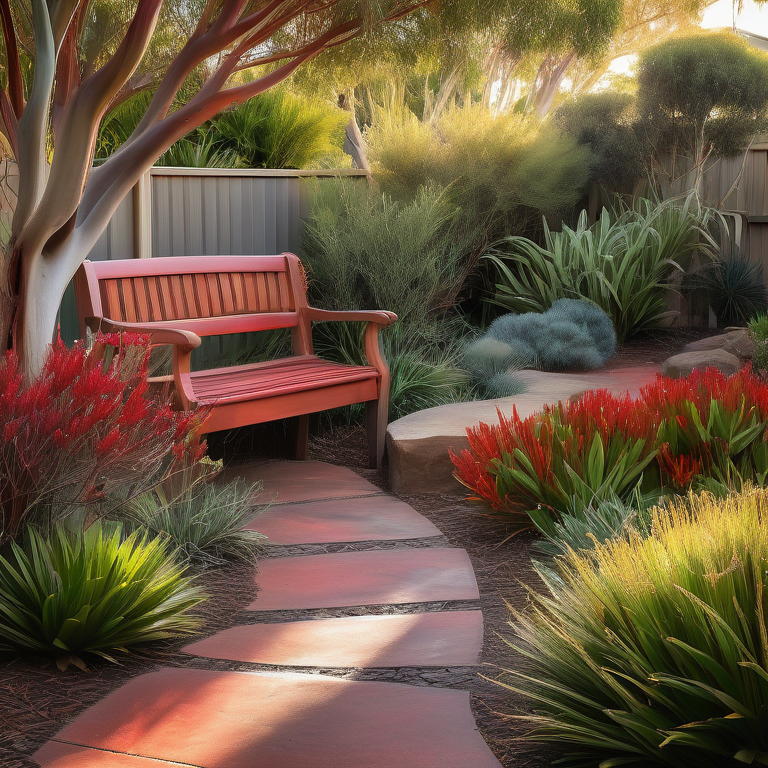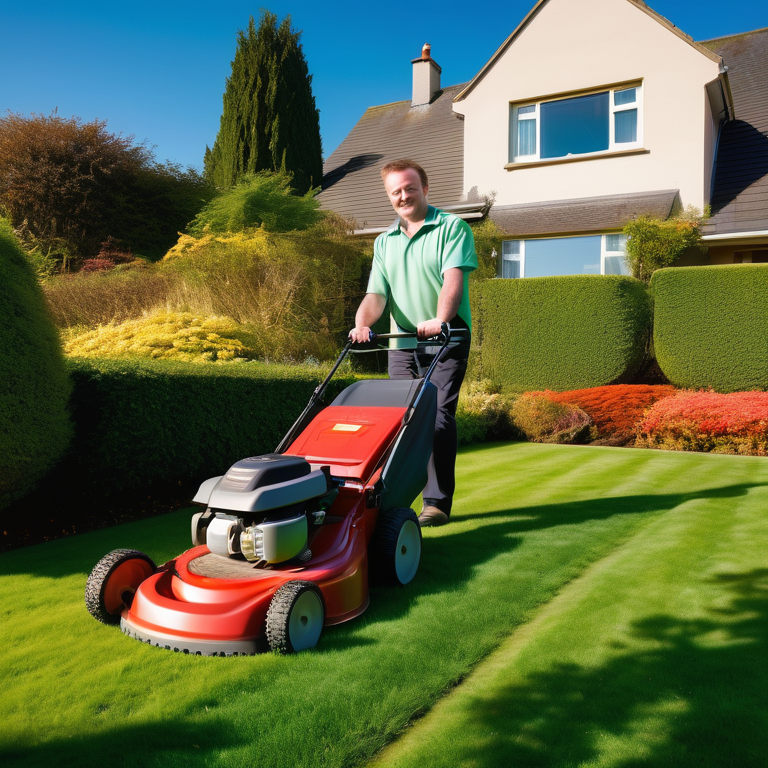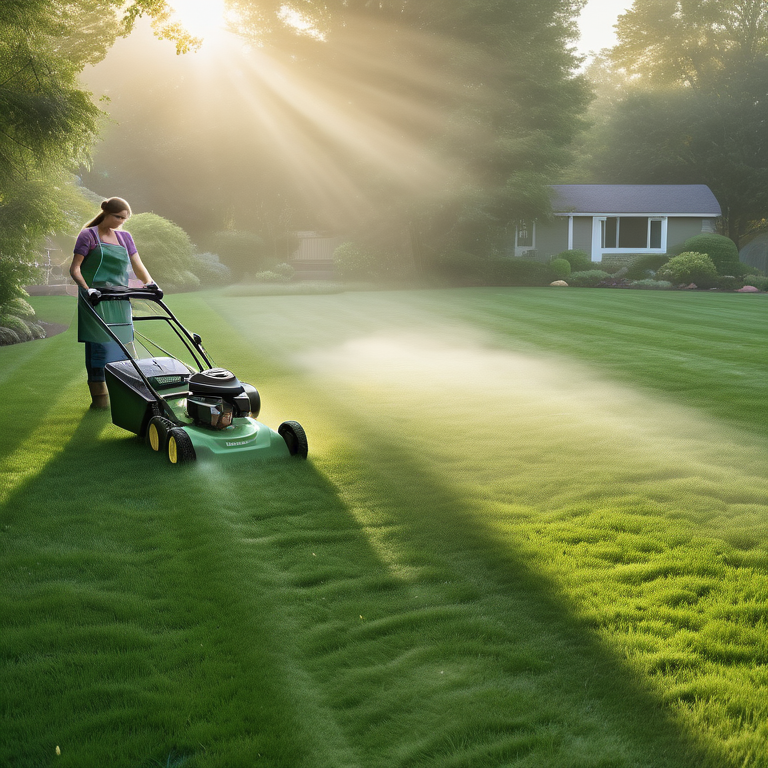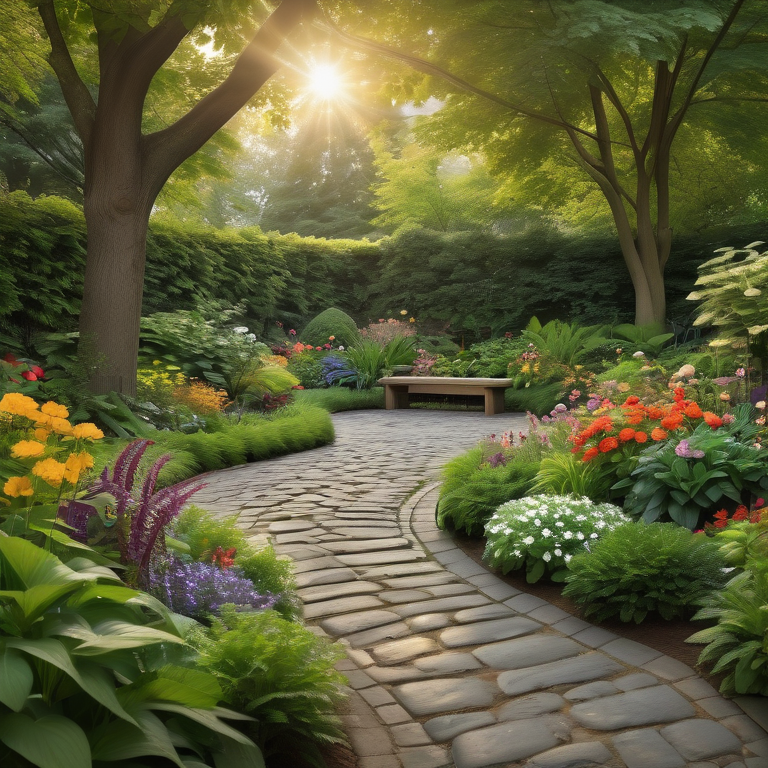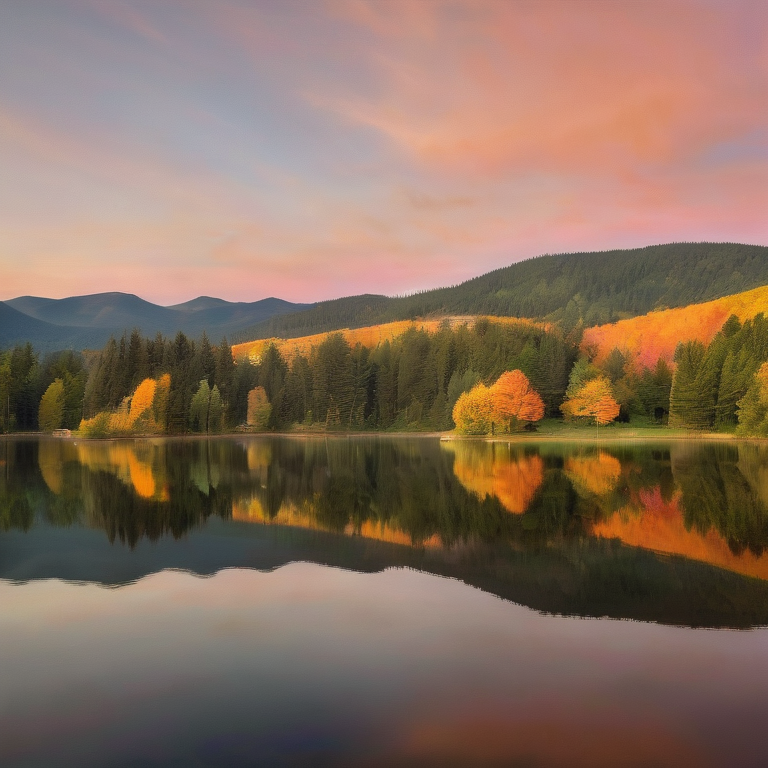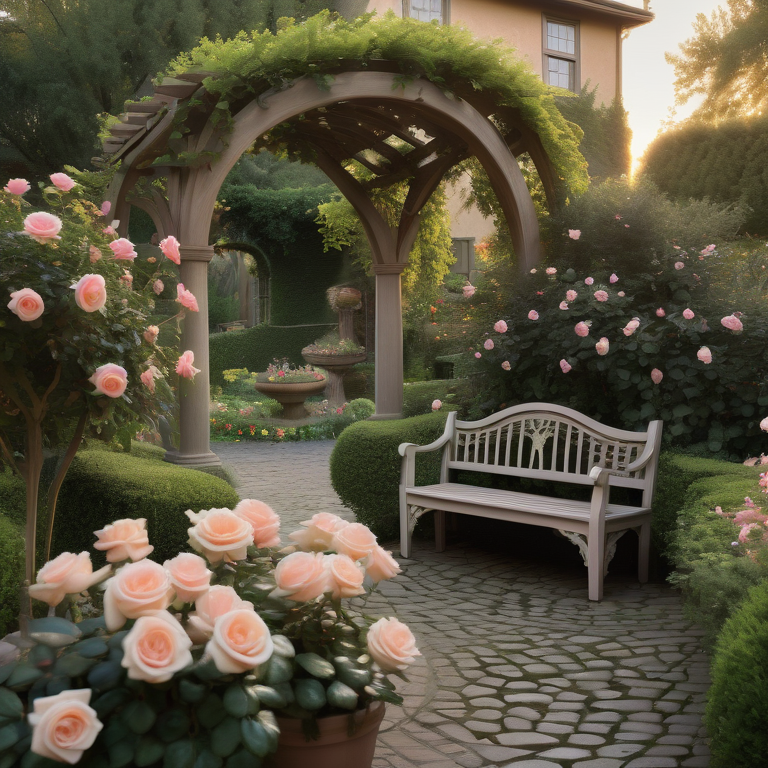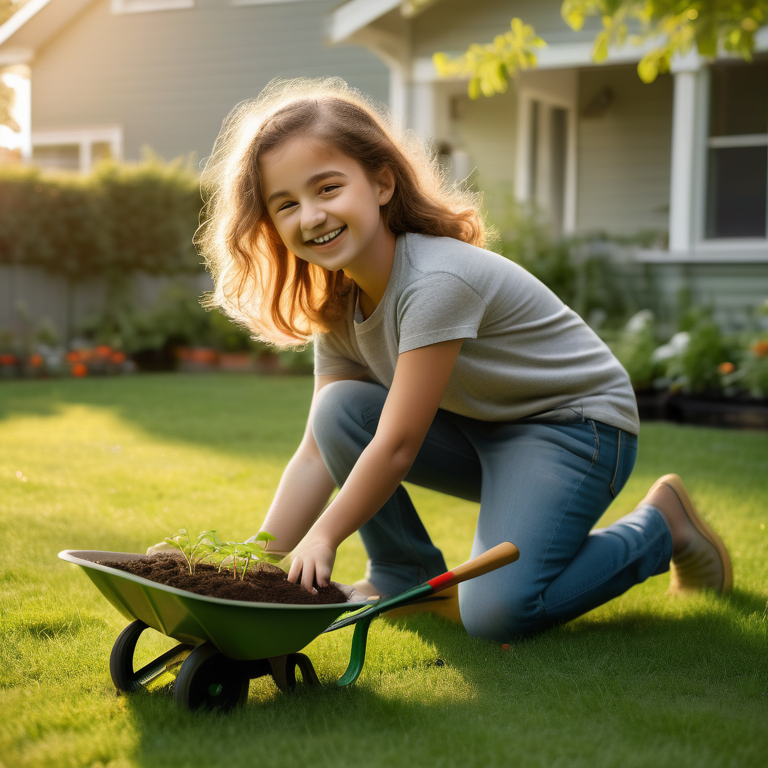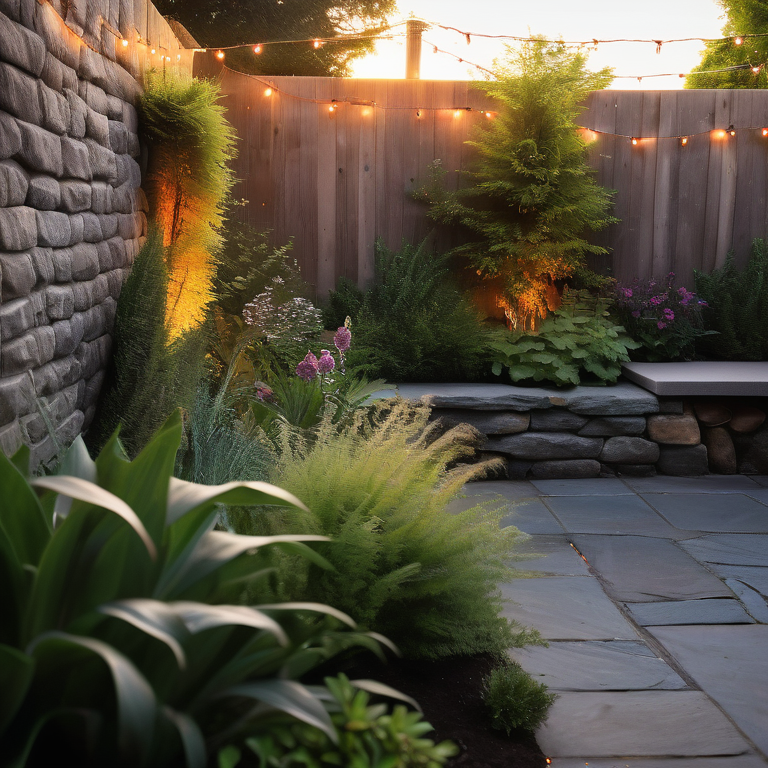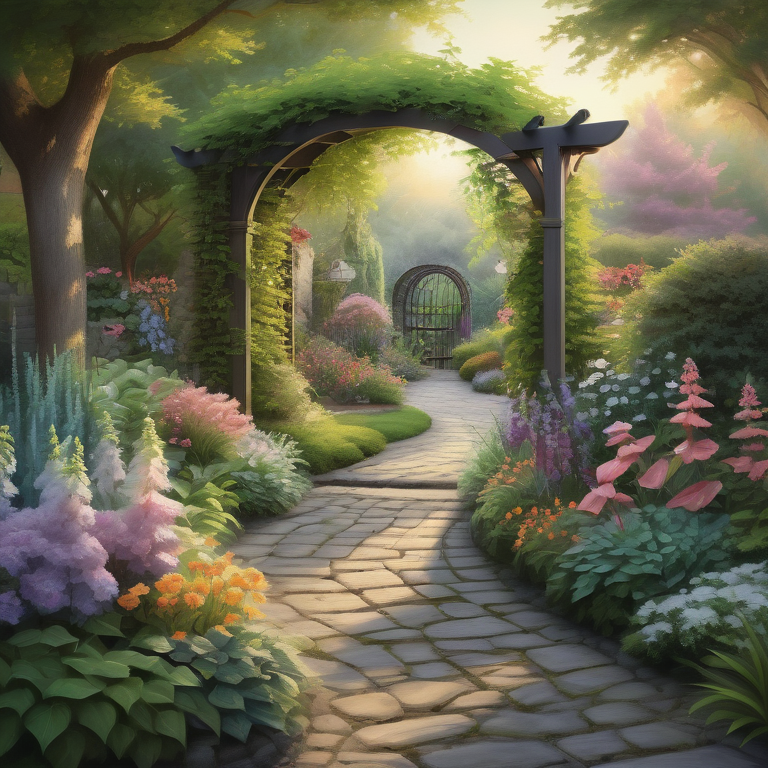Key Highlights
- Australian garden designs celebrate the country’s unique flora and fauna, combining environmental mindfulness with modern design styles.
- Native plants are a key element in Australian garden designs, providing biodiversity and attracting local wildlife.
- Sustainable water features, such as ponds and rain gardens, are popular in Australian gardens, helping to conserve water and create a soothing ambiance.
- The bush garden style embraces a natural, wild approach, using large shrubs and a variety of plants to create a diverse and vibrant landscape.
- Contemporary minimalist gardens focus on simplicity, with clean lines and a restrained use of color, creating a modern and elegant outdoor space.
- Coastal retreat gardens feature salt-tolerant and hardy plants, creating a beautiful and low-maintenance garden design.
Introduction
Australian garden designs are known for their unique blend of native flora, exotic plants, and stunning water features. These designs celebrate Australia’s rich biodiversity and create beautiful outdoor spaces that harmonize with the surrounding landscape. Whether you prefer a natural and wild bush garden or a contemporary minimalist design, incorporating landscape design into your Australian garden is essential. With the perfect balance of sustainability and style, these gardens serve as the perfect backdrop to many cherished childhood memories and will continue to inspire generations to come.
In this blog, we will explore 10 must-have Australian garden designs that will transform your outdoor space into a stunning oasis. From native plant oasis to coastal retreats, each design offers its own unique features and benefits. We will discuss the key elements of each design, including the use of climbers, and provide tips on how to create and maintain these beautiful small gardens.
Australian garden designs not only enhance the beauty of your home but also contribute to the local ecosystem by attracting birds, bees, and other wildlife. They also provide a sense of tranquility and balance, creating a peaceful retreat in your own backyard. So, whether you have a large garden or a small space, there’s an Australian garden design that’s perfect for you. Let’s dive in and explore these stunning garden designs that are a true reflection of Australia’s natural beauty, including the use of small native plants such as acacia in cottage gardens, as well as the importance of a lush and diverse canopy in woodland gardens.
10 Essential Australian Garden Designs for Your Home
When it comes to Australian garden designs, there are 10 essential styles that every homeowner should consider. These designs highlight the beauty of native Australian plants, emphasize the importance of plant selection, and showcase the versatility of garden beds. Whether you’re looking for a vibrant and colorful cottage garden or a tranquil and balanced zen garden, there’s a design that will suit your taste and preferences. Let’s take a closer look at these 10 must-have Australian garden designs, including five star performers that offer a range of benefits, such as attracting native pollinators and withstanding harsh conditions, and the addition of a pergola for a perfect outdoor entertaining space. www.wicklowlandscaping.ie
1. Native Plant Oasis: Embracing Indigenous Flora
One of the most popular Australian garden designs is the native plant oasis. This design celebrates the beauty and diversity of Australia’s indigenous flora and creates a haven for local wildlife. Here are a few key features of a native plant oasis:
- Use a variety of native plants to create a diverse and vibrant landscape.
- Incorporate plants that attract local wildlife, such as birds, butterflies, and bees.
- Emphasize biodiversity by planting different species and creating a balanced ecosystem.
- Opt for low-maintenance native plants that are well-suited to the local climate and soil conditions.
By embracing indigenous flora, a native plant oasis not only creates a stunning garden but also contributes to the preservation of Australia’s unique biodiversity.
2. Sustainable Water Features: Ponds and Rain Gardens
Water features are an essential element in Australian garden designs, adding a sense of tranquility and beauty. However, in sustainable garden designs, it’s important to consider water conservation and choose features that are environmentally friendly. Here are some key points to consider when incorporating sustainable water features:
- Opt for ponds and rain gardens that capture and reuse rainwater, reducing the need for additional water sources.
- Use native aquatic plants and water-loving species that require less water and are well-adapted to the local climate.
- Incorporate elements such as waterfalls or fountains that recirculate the water, minimizing water wastage.
- Consider using permeable paving around the water feature to allow rainwater to infiltrate the soil and recharge groundwater.
By choosing sustainable water features, you can create a beautiful and eco-friendly garden design that conserves water and supports the local ecosystem. www.wicklowlandscaping.ie
3. The Bush Garden: A Wild, Natural Approach
The bush garden design embraces a wild and natural approach, creating a landscape that reflects the beauty of Australia’s native bushland. This design incorporates a variety of plants, including large shrubs and native trees, as well as low shrubs, to create a diverse and vibrant garden. One key feature plant in the bush garden is the “Pinnacle” Syzygium, which can reach heights of up to 3-4 meters and is ideal for tight planting areas like courtyards. This low-maintenance plant requires minimal watering and pruning, making it a perfect addition to any bush garden. It can also be used as a feature plant in containers, adding a touch of native beauty to any outdoor space. Here are a few more key features of the bush garden design:
- Emphasize a natural landscape by using a mix of native plants and indigenous species.
- Incorporate large shrubs and trees to create a sense of depth and provide shade.
- Choose plants that are well-adapted to the local climate and soil conditions, requiring less maintenance and water.
- Create a variety of plantings to attract local wildlife and promote biodiversity.
The bush garden design offers a natural and untamed beauty that celebrates Australia’s unique flora and creates a peaceful retreat in your own backyard. www.wicklowlandscaping.ie
4. Contemporary Minimalist Gardens: Less Is More
If you prefer a clean and modern aesthetic, a contemporary minimalist garden design is the perfect choice. This design style focuses on simplicity and clean lines, creating a sleek and elegant outdoor space. Here are a few key features of a contemporary minimalist garden:
- Emphasize a minimalist design with clean lines and a restrained use of color.
- Choose plants with simple and uncluttered foliage to maintain a clean and sleek appearance.
- Incorporate straight lines and geometric shapes in the layout of the garden for a modern look.
- Use a limited color palette, focusing on shades of green and white, to create a sense of calm and serenity.
A contemporary minimalist garden design offers a sleek and sophisticated outdoor space that is perfect for those who appreciate clean and modern aesthetics.
5. Coastal Retreats: Salt-Tolerant and Hardy Plants
For those living near the coast, a coastal retreat garden design is ideal. This design incorporates salt-tolerant and hardy plants that can withstand the harsh coastal conditions. Here are a few key features of a coastal retreat garden:
- Choose plants that are well-adapted to coastal conditions, such as salt-tolerant species.
- Opt for hard surfaces, such as gravel or decking, to minimize water runoff and allow for easy maintenance.
- Incorporate elements like driftwood or seashells to create a beach-inspired theme.
- Use native coastal plants to create a sense of place and enhance the natural beauty of the coastal environment.
A coastal retreat garden design offers a low-maintenance and beautiful outdoor space that celebrates the unique coastal landscape. www.wicklowlandscaping.ie
6. Urban Edible Gardens: Fruits, Vegetables, and Herbs
Urban edible gardens are becoming increasingly popular as more people embrace sustainable living and local food production. This design style focuses on growing fruits, vegetables, and herbs in urban spaces. Here are a few key features of an urban edible garden:
- Incorporate raised garden beds or containers for growing fruits, vegetables, and herbs in limited spaces.
- Choose a variety of edible plants that are well-suited to the local climate and soil conditions.
- Use organic gardening practices, such as composting and natural pest control, to promote healthy and sustainable food production.
- Incorporate edible flowers and companion planting to attract beneficial insects and create a diverse and vibrant garden.
An urban edible garden not only provides fresh and nutritious food but also contributes to a more sustainable and environmentally friendly lifestyle. www.wicklowlandscaping.ie
7. Cottage Gardens: Colorful Blooms and Aromatic Herbs
Cottage gardens are known for their colorful blooms, aromatic herbs, and romantic charm. This design style celebrates the beauty of traditional English cottage gardens while incorporating Australian native plants. Here are a few key features of a cottage garden:
- Choose a variety of cottage garden favorites, such as roses, lavender, and daisies, for their vibrant colors and sweet scents.
- Incorporate native Australian plants, such as kangaroo paws and flannel flowers, to add a unique and local touch to the garden.
- Use a mix of perennials and annuals to create a continuous display of blooms throughout the year.
- Include a variety of aromatic herbs, such as basil and thyme, for their culinary uses and pleasant fragrances.
A cottage garden design offers a charming and nostalgic outdoor space that is filled with colorful blooms and aromatic scents.
8. Wildlife-Friendly Spaces: Attracting Birds and Bees
Creating a wildlife-friendly garden is not only a beautiful addition to your home but also helps support local ecosystems. By incorporating plants and features that attract birds and bees, you can create a vibrant and lively outdoor space. Here are a few key features of a wildlife-friendly garden:
- Choose plants that provide food and shelter for birds and bees, such as nectar-rich flowers and native grasses.
- Incorporate bird feeders, bird baths, and bee houses to provide additional food and shelter for wildlife.
- Avoid the use of pesticides and chemical fertilizers, as they can harm birds, bees, and other beneficial insects.
- Create a variety of habitats, such as dense shrubs and trees, open meadows, and water features, to attract a diverse range of wildlife.
A wildlife-friendly garden design not only enhances the beauty of your outdoor space but also contributes to the conservation of local bird and bee populations. www.wicklowlandscaping.ie
9. Mediterranean-Inspired Havens: Drought-Resistant and Vibrant
If you love the vibrant colors and lush foliage of Mediterranean gardens, a Mediterranean-inspired garden design is the perfect choice. This design style incorporates drought-resistant plants and vibrant colours to create a stunning outdoor space reminiscent of the Mediterranean coast. One popular style of garden in this category is the Palm Springs-inspired garden, which features cacti and succulents, particularly mother-in-law’s-tongue (Sansevieria trifasciata), for a unique and low-maintenance look. Here are a few key features of a Mediterranean-inspired garden:
- Choose plants that are well-adapted to dry and hot conditions, such as lavender, rosemary, and olive trees.
- Opt for vibrant colors, such as deep blues, bright yellows, and rich purples, to create a lively and vibrant garden.
- Use gravel or stone pathways and terracotta pots to enhance the Mediterranean aesthetic.
- Incorporate elements like water features or fountains to create a soothing and relaxing ambiance.
A Mediterranean-inspired garden design offers a beautiful and low-maintenance outdoor space that evokes the charm and beauty of the Mediterranean coast. www.wicklowlandscaping.ie
10. Zen Gardens: Tranquility and Balance
Zen gardens are designed to create a sense of tranquility and balance, providing a peaceful retreat from the busy world. This design style focuses on simplicity, minimalism, and natural elements. Here are a few key features of a zen garden:
- Use a limited color palette, focusing on shades of green and earth tones, to create a serene and calming atmosphere.
- Incorporate natural elements like rocks, gravel, and sand to create a harmonious and balanced landscape.
- Opt for simple and uncluttered plantings, such as mosses and dwarf trees, to maintain a sense of simplicity.
- Create a focal point, such as a meditation area or a water feature, to enhance the zen atmosphere.
A zen garden design offers a serene and tranquil outdoor space that promotes relaxation and balance. www.wicklowlandscaping.ie
Key Takeaways on Australian Garden Design
Australian garden designs celebrate the unique flora and fauna of the country while incorporating sustainable and environmentally friendly practices. Key takeaways from these garden designs include:
- Consider the surrounding landscape when designing your garden to create a harmonious and cohesive outdoor space.
- Choose plants that are well-suited to the specific local conditions, such as the climate and soil type.
- Emphasize sustainability by incorporating water-saving features, native plants, and organic gardening practices.
- Create a diverse and vibrant garden by incorporating a variety of plant species and attracting local wildlife.
By following these key principles of Australian garden design, you can create a beautiful and sustainable outdoor space that enhances the beauty of your home and supports the local ecosystem. www.wicklowlandscaping.ie
Understanding the Significance of Native Plants
Native plants play a significant role in Australian garden designs, offering numerous benefits for both the environment and the homeowner. Here’s why native plants are essential in Australian gardens:
- Native plants are well-suited to the specific local conditions, such as the climate and soil type, requiring less water and maintenance.
- They have adapted to poor soil conditions, making them more resilient and better able to survive in challenging environments.
- Native plants provide habitat and food for local wildlife, contributing to the conservation of biodiversity.
- They promote the preservation of Australia’s unique flora and contribute to a sense of place in garden designs.
By incorporating native plants in your garden, you not only create a beautiful and sustainable outdoor space but also contribute to the preservation of Australia’s natural heritage.
The Importance of Water Conservation in Design
Water conservation is a crucial consideration in Australian garden design, particularly in a country with a history of droughts and water scarcity. Here’s why water conservation is important in garden design:
- Sustainable garden designs aim to minimize water usage and promote the efficient use of water resources.
- Water-saving features, such as rainwater harvesting systems and efficient irrigation methods, help reduce reliance on mains water.
- Choosing drought-tolerant plants and incorporating water-smart practices, such as mulching and proper soil preparation, can significantly reduce water requirements.
- By conserving water in garden design, you contribute to a more sustainable and environmentally friendly landscape.
Water conservation is not only essential for the environment but also helps reduce water bills and promotes a greener and more sustainable future. www.wicklowlandscaping.ie
How to Create a Garden That Complements the Australian Climate
Creating a garden that complements the Australian climate involves careful plant selection and consideration of the style of the garden. Here are some tips for creating a climate-appropriate garden:
- Choose plants that are well-adapted to the specific climatic conditions of your region, such as heat-tolerant plants for hot and arid areas.
- Consider the style of the garden and select plants that suit the aesthetic and design principles of that style.
- Incorporate water-saving features and practices to minimize water usage and promote sustainability in the face of varying climatic conditions.
- Consider using native plants that are naturally suited to the local climate and require less maintenance.
By creating a garden that complements the Australian climate, you can ensure a thriving and sustainable outdoor space that withstands the challenges of the local environment. www.wicklowlandscaping.ie
Conclusion
In conclusion, Australian garden designs offer a diverse range from native plant oases to urban edible gardens, catering to various tastes and environments. Embrace indigenous flora and sustainable water features while considering the local climate for a successful garden. These designs not only enhance your outdoor space but also promote sustainability and wildlife conservation. Whether you seek tranquility in a Zen garden or vibrancy in a Mediterranean-inspired haven, Australian garden designs present a unique blend of beauty and functionality. Explore these ideas to create a stunning landscape that reflects the natural charm of Australia’s flora and climate. www.wicklowlandscaping.ie
Frequently Asked Questions
What Makes an Australian Garden Design Unique?
Australian garden designs are unique because they celebrate the country’s diverse flora and fauna. They incorporate native plants, sustainable practices, and styles that complement the Australian landscape, creating beautiful and environmentally friendly outdoor spaces.
How Do I Choose the Right Plants for My Australian Garden?
When choosing plants for your Australian garden, consider the specific local conditions, such as climate and soil type. Opt for Australian native plants that are well-adapted to these conditions and consider the design principles of your garden style.
Can Australian Garden Designs Be Applied in Small Spaces?
Yes, Australian garden designs can be applied to small spaces. Choose plants that are suitable for your specific local conditions and select compact varieties to maximize space. Consider vertical gardening and clever design techniques to make the most of limited space.
Are Australian Garden Designs Sustainable and Eco-Friendly?
Yes, Australian garden designs prioritize sustainability and eco-friendliness. They incorporate water-saving features, native plants, and organic gardening practices to minimize environmental impact and create a more sustainable and environmentally friendly outdoor space.
How Often Should I Update or Maintain My Australian Garden?
The frequency of garden maintenance varies depending on the specific design and plant selection. Generally, regular maintenance is required to keep the garden in good condition, including pruning, weeding, and pest control. Native plants generally require less maintenance than exotic species.
What Are the First Steps in Creating an Australian Garden Design?
The first steps in creating an Australian garden design involve determining the style of the garden, selecting appropriate plants for the local climate and conditions, and planning the layout and design. Consider your preferences, the available space, and the intended use of the garden.
How Can www.wicklowlandscaping.ie Help in Designing My Australian Garden?
www.wicklowlandscaping.ie offers professional landscaping services that can help design your Australian garden. Their experienced team can assist with garden design, plant selection, and the installation of pathways and other features. Contact them for expert guidance and assistance in creating your dream garden.

